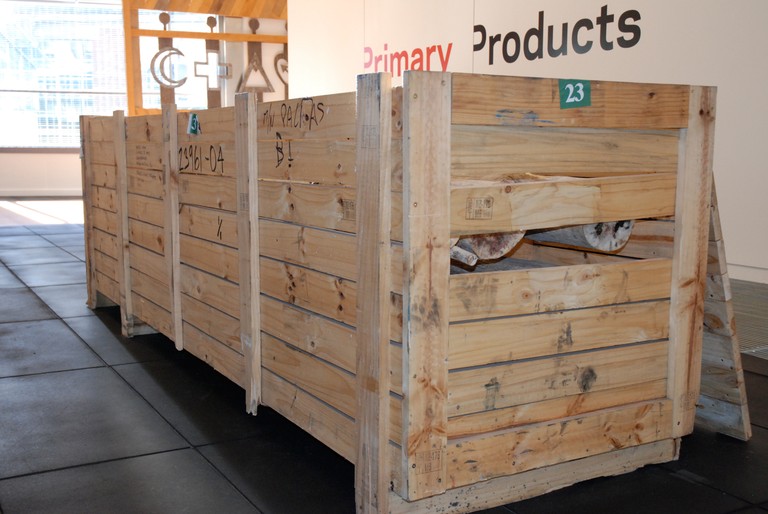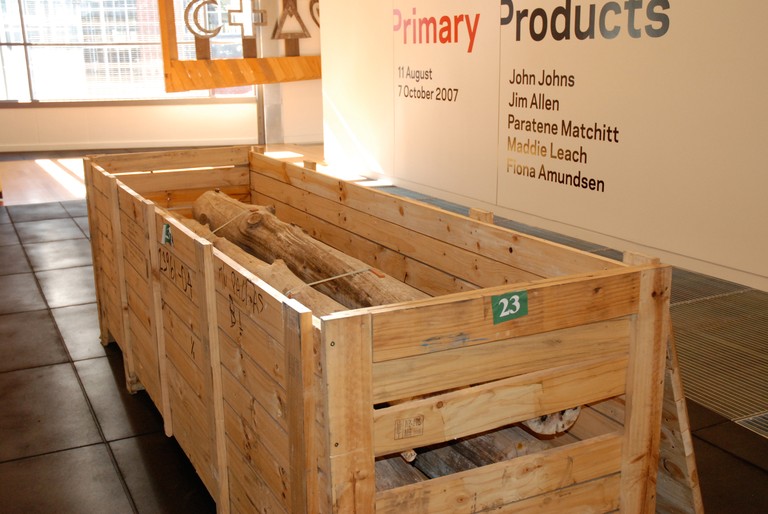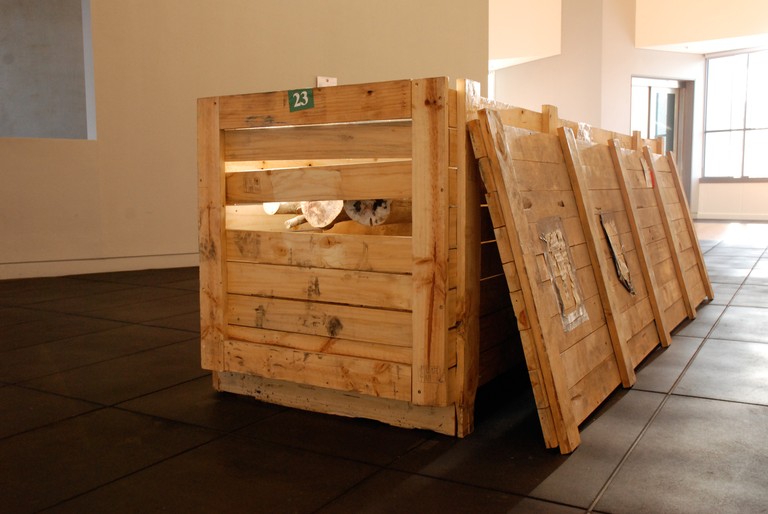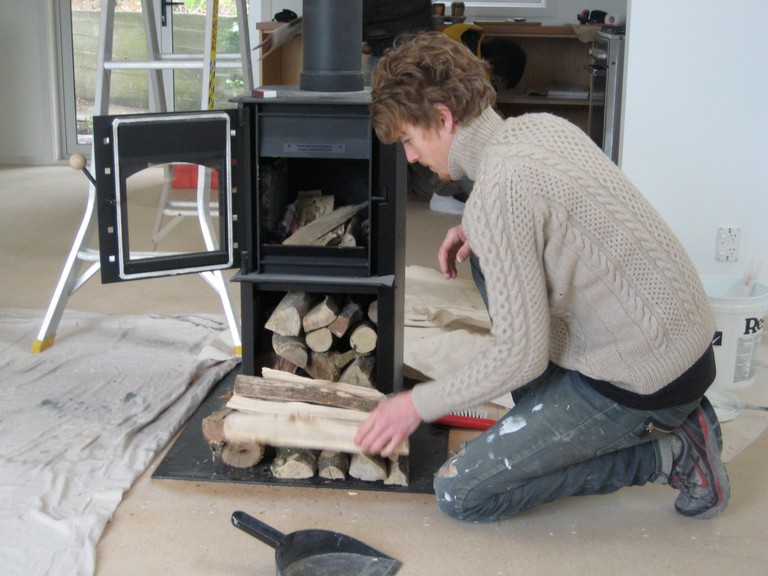The Occasional Journal
The Dendromaniac
March 2015
-
Editorial
Alice Tappenden, Ann Shelton, Jessica Hubbard -
For the trees
Rachel Buchanan -
dwelling trees, tree dwellings
Xin Cheng -
Axis Mundi: Long Live the Tree of Life
Prudence Gibson, Tessa Laird -
Forest satyagraha
Robyn Maree Pickens -
Garden City
Holly Best -
Accentuated Breath
Clare Hartley McLean -
On the portraiture of mushrooms
Creek Waddington -
Shade
Andrea Gardner -
bigwoods
Emil McAvoy -
Regan Gentry: Transformer and Master of Time
Sharon Taylor-Offord -
Colonisation versus conservation: a colonial view
Rebecca Rice -
Tae
Bridget Reweti -
The Framing of the Earth
Richard Shepherd -
Wildness in the Garden of Empire
Shaun Matthews -
In search of unknown vandals
Bronwyn Holloway-Smith, Thomasin Sleigh -
Bo.tan.i.cal: from the Greek
Jessica Hubbard -
The Tree as Traveller: Sakura in space, kōwhai in Chelsea, and the oldest pohutukawa in Spain
Emma Ng -
Seeing the wood and the trees: a complicating history of Hitler’s Oaks
Ann Shelton -
Conversations with Cripplewood
Cat Auburn -
Out of the Woods: The Return of Twin Peaks
Alice Tappenden, Matt Plummer -
The conceptual, the pastoral, and the plainly freakish (or, some of my favourite artworks are trees…)
Martin Patrick -
This is a femme slam.
Sian Torrington -
Explorations
Christian Nyampeta -
Works from the series An Ethnography on Gardening, 2006-2008
Raul Ortega Ayala -
Bent
Jonathan Kennett, Mary Macpherson -
One Shining Gum / Savia Brillante
Christina Barton, Maddie Leach, Zara Stanhope -
Acknowledgments
Alice Tappenden, Ann Shelton
One Shining Gum / Savia Brillante
Christina Barton, Maddie Leach, Zara Stanhope


















All images supplied by Maddie Leach from Trans Versa, 2006 and Primary Products, 2007 © Maddie Leach
The risks of exchange
In 2006, Maddie Leach commenced a project that was deliberately shaped by distance and unpredictability. Over time, it is one that has taken on Allan Sekula-like dimensions.
The work had its genesis in the provocations inherent in The South Project. The South Project itself was an incitement – to create dialogue and connections between arts and cultural practitioners in the southern hemisphere or global south and was established by Kevin Murray and Magdalena Moreno from their base in Melbourne.1 With this as its agenda The South Project generated many activities, including annual Gatherings in different countries, all of which invited journeys of discovery and conversations that risked the potential fissures arising from translation and mis-translation.
Leach’s project arose from an invitation to participate in Trans Versa, a component of The South Project gathering in Santiago, Chile, in 2006. As neighbours that share Pacific Ocean coastlines, Chile and New Zealand have similarities in aspects of geography and vegetation and historically were colonised by Europe, albeit from different regions. Moreno originally invited artists to curate an exhibition for the occasion, but Trans Versa instead attempted to respond to the challenge of generating south-south dialogue by means of facilitating artists to create work in response to the Santiago environment. Co-curator Danae Mossman and I invited artists from New Zealand and Australia to propose projects for Santiago on the basis of their site and socially responsive practices. Leach was one of the thirteen we were able to support.2
For me as a curator, the proposition of working between New Zealand/Australia and Chile was one of conversation and listening, facilitating artists while at the same time finding ways to introduce (without imposing) ourselves to a community in Santiago. This was always going to be a test of all our practices, and of the discourses on site, sociality and participation. Compared to today, Santiago in 2006 was rawer, the standard of living was tougher, there was a higher level of homelessness and squatting communities, and the presence of the military and resonance of the Pinochet regime was still apparent. The artists could opt to operate in public spaces and/or exhibit the outcomes in institutions that had been negotiated by Moreno: Galeria Metropolitana, Centro Cultural Matucana 100 or Museo de Arte Contemporáneo (MAC). How far could the artists go in allowing their projects to be shaped by the environment and by the people they met, as well as by the resources available and the time frame (for most artists one month)? Some addressed the urgent local issues of housing, ecology or loss of indigenous cultures, while others found ways to connect their thinking with Chilean society.
Leach’s research-based approach gives her practice a conceptual base, and her work for Trans Versa was no different, being based in a critical approach to place and the connection of ecology and economy. Like Daniel Malone, who celebrated the sweet potato native to both Chile and New Zealand, Leach focused on shared botany, in particular the Eucalyptus tree. While challenging ides of use and value, her thinking also highlighted many of the ideas Mossman and I had raised in our initial thinking, including notions of traffic and flows across space, time and between peoples. Leach’s project literalised the notion of exchange and travel, and demonstrated the borders to interchange and even trade.
Leach’s project is further explained and despite her clarity of thought and attention to detail, it culminated in the eucalyptus she shipped to Chile being unable to enter the country. The missing consignment was represented at MAC with an empty space that resonated across multiple, discursive fields, leaving the project to remain open-ended. Engaging with the Chilean environment in a unique way, Leach’s project demonstrated the need to be open to happenstance and flux, and the imperfections of translation when undertaking dialogue in another’s land.
Zara Stanhope
Principal Curator,
Auckland Art Gallery Toi o Tāmaki
No further need to worry
Sometimes people ask me what happened to the logs that went to Chile. There are three remaining pieces of the Carterton-grown ‘Shining Gum’ (Eucalyptus Nitens) that I tried to send to Santiago in 2006. There’s a single round about 2 feet high that sits in my back garden and served as a workable chopping block for a few years before its surface gave way and became fibrous, flayed and uneven. I have two short lengths that constitute the very top willowy portion of the tree. They lean up against each other by a shelf, as a remnant decoration, and only measure a few centimetres in diameter at their thickest point. They are a smooth, knobbly, striated brown and look like oversized chopsticks. These two pieces have also travelled the furthest – on the ocean journey to Valparaiso, and back, and then by air to Chicago, and back, as a small part of another exhibition in 2009.
After appearing in Tina’s Primary Products show at the Adam Art Gallery in 2007 the rest of the lumber was chain-sawed into pieces and split to fit my log burner. It yielded fine dry wood for a winter, producing a crackling heat and the wood caught like a dream. Before burning it I checked with MAF that it was OK to be used for firewood, explaining that it had been heavily fumigated, at various ports, as it departed and entered New Zealand, Chile, Singapore and Hong Kong.
Perhaps as a kind of forced entropic act, fire and heat were the endgame I had intended anyway. The logs were to be donated to a local orphanage in Santiago after the Trans Versa exhibition was over (I’d been given two possible options: they could be used as fuel for a local business or sent to an orphanage to be used for heating. It felt willfully callous to choose the first option). There was no budget to ship them back to New Zealand and much of my thinking was focused on the act of offering or ‘gifting’ timber to a country that competes directly with New Zealand in the wood products market, and on navigating the protectionist barriers that resisted and deterred interaction of these materials between the two places.
More than the memory of ‘failure’ that edged the non-arrival of the crate of logs for the opening of Trans Versa, what is particularly interesting to me now is why, if burning was already part of my conceptual framework, when faced with the choice of having the logs incinerated on the Valparaiso docks by Chilean customs officers, I chose to pay $1200 to retrace their three month Pacific journey and return to New Zealand. I’m certain I was anguished by a sense of brutality, expediency and unexpected foreclosure if that action by port authorities were to take place. I also think it was the first time I faced what it means to have a radical shift occur in the conceptual schema of a project, to actively contend with forces, disruptions and interruptions not comprehended or accounted for.
One shining Gum (Savia Brillante) is a project that became an unexpected and grindingly slow narrative, unfolding the kind of optimistic yet unforgiving conceptual-material test that I’ve deliberately employed in other projects (If you find the good oil let us know (2012-2014); Let us Keep Together (2011); Signs and Wonders Shall Appear (2010); Perigee #11 (2008)). Unlike Simon Starling’s depiction of himself as a “serendipitous artist” (in his 2014 lecture at City Gallery Wellington) perhaps I prefer being a gambler and playing the odds as a way to enliven the spirit of each new work. But it’s also a about a love of waiting that has haunted my work for many years – think of Vladimir and Estragon under the street lamp in Waiting for Godot. There is an inconclusiveness quality in Beckett’s work characterised by dialogue set in conflict with itself. Devices of qualification and cancellation produce statements such as: “I think, but I don’t think so” (Three Novels); “I’ll go on, I can’t go on” (The Unnamable); “You are crying. (pause) Are you crying?” and “It looks like a kind of ball. And yet it is not a ball” (All that Fall). His particular view on the absurd, his use of protraction, looping and repetition, has never failed to appeal to me as a space of unwavering possibility, resilience and production.
Maddie Leach
14 December 2014
Flight NZ175, Auckland to Perth
There and back, again
I saw the rectangle marking the empty space where the crate containing Maddie Leach’s eucalyptus log (One Shining Gum (Savia Brillante), 2006) would have been installed in the Trans-Versa exhibition in Santiago, Chile, had the shipment arrived in time and the local authorities allowed its delivery from the port of Valparaiso. I was there to speak at The South Project’s conference for which the show had been devised. At this gathering of artists, craftspeople, curators and arts professionals from the region ‘below’ the Equator that stretches from South Africa to South America and encompasses Australia, New Zealand and the Pacific, I chose to talk about Jim Allen’s Small Worlds, an exhibition of environmental sculptures he realised in 1969 on his return from his mind-opening sabbatical to Europe, USA, and Mexico in 1968, which culminated in New Zealand Environment No 5 (1970, Govett-Brewster Art Gallery), a hessian-covered enclosure, which, I argued, owed something to the work of Brazilian artist Hélio Oiticica; a South American connection I had previously not appreciated.
Allen’s NZ Environment No 5 is one of the few installations of the 1970s that has survived; it is a key work in the history of post-object art. I now see it as critical to shifts New Zealand art underwent in that decade, not just for its use of readymade materials (steel, hessian, wool, woodchips, barbed wire, nylon, and neon) and its scale and structure that allows participation on the part of the viewer; but for its reformulation of the genre of landscape, that subject central to this nation’s self imagining. Allen’s installation requires the viewer to enter a confined space where their senses are assailed with the colours, smells and textures of colonised nature. Wool, sawdust and barbed wire are the by-products of New Zealand’s agricultural industries, where the land is divided up, farmed, cropped; exploited. No wonder the work was included in Artspace’s riposte to the Auckland City Art Gallery’s celebratory Two Centuries of New Zealand Landscape Artat the George Fraser Gallery: A Few Years of New Zealand Landscape Art in 1990.
I don’t doubt that it was this sequence of events in Santiago that led to Primary Products, the exhibition I curated for the Adam Art Gallery in 2007, which brought Maddie’s log, in its then-battered crate returned from its long sea voyage to and back from Chile, together with Allen’s New Zealand Environment No 5, and works by Paratene Matchitt, John Johns, and Fiona Amundsen, all of which either referred to New Zealand’s forestry industry or made use of exotic timber. What interested me then, and what was the lasting provocation of the project, was the contiguity between the forms and processes of modernism (its ordered geometries and its abstract symbolism) and the aesthetics of modernity as it was imposed by this industry onto the natural chaos of ‘native’ New Zealand. It seemed to me that focusing on the introduction of exotic trees and the development of New Zealand’s trade in non-native timber was a means to chart New Zealand’s modern history and its critical, constructive and creative consequences. I liked the way each artist in the show rendered their products inutile, taking them out of circulation as economic units and turning them into objects for thought: art works.
I learnt much from undertaking this exhibition, not least the contradictions of modernist ‘progress’: exotic trees ‘saved’ indigenous forests from complete destruction; the dismantling of the Forest Service and the sale of state-owned forests not only had dire social consequences for communities which grew up around the forestry industry, but ended one strand of government support for the arts (John Johns was ‘official’ photographer to the Service); the production and management of exotic trees is an extractive industry tied to global market forces but their existence mitigates the effects of global warming; the deployment of non-native timber and modern tools (steel chisels and chainsaws) are critical features of the emergence of Contemporary Maori Art; and so on.
Maddie’s installation was critical to the mix. Combining ‘raw’ log and ‘cooked’ crate, it spoke eloquently of the uses to which our ‘primary products’ are put; occupying space like a minimalist sculpture, it drew attention to the modernist appropriation of industrial forms and constructive processes; evidencing a frustrated attempt to mimic the processes of trade and exchange, it refuted the usual logic of production. Subsequently sawn up, split and burnt as firewood, her project has an evanescence that is striking. It references a new order or era of ‘post-production’, a mode of working ‘after’ modernism, a way forward that places different emphasis on ‘things’; a tree is thus at once an element of organic life, a material object with particular qualities including the capacity to be cut, shipped, and commodified, and a source of energy—warmth—a companionable resource for human life.
Christina Barton
January 2015
About the authors
Dr Zara Stanhope is Principal Curator and Head of Programmes at Auckland Art Gallery Toi o Tamaki, and Adjunct Professor at AUT University. She continues to advocate for cross-cultural exchange, and the dialogue that was the platform for the South Project.
Christina Barton is Director of the Adam Art Gallery at Victoria University of Wellington, where she also teaches the history of New Zealand art.
Maddie Leach’s practice is largely project-based, investigating viable ways of making artworks in order to interpret and respond to specific place-determined content. Leach has consistently varied the way she resolves her work having fabricated objects or had them fabricated for her, used text and print media, worked with video, performative actions and processes of exchange. Leach is interested in the space between what is expected and what happens, between potential and actual forms. She establishes idiosyncratic compositions of seemingly disparate elements to suggest the dynamic and diffuse nature of place—often imparting a transient, almost fugitive, status to the art work.
Her work has been commissioned for: If you were to live here…The 5th Auckland Triennial (2013), Iteration: Again, Tasmania, (2011), the National Sculpture Factory and Cork City Council, Ireland (2011), Close Encounters, Chicago (2010) and One Day Sculpture, New Zealand (2008). In 2014 Leach’s project If you find the good oil let us know was nominated for New Zealand’s premier art award the Walters Prize.
